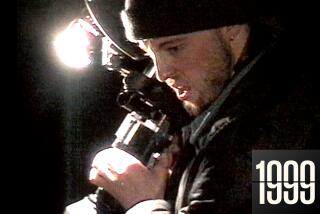Measuring Movie Hype
- Share via
Michael Cieply and Peter F. Johnson’s article on the reality of film publicity was another ridiculous example of how statistics can be invented and manipulated to make a logical element of motion picture marketing look wasteful (“Movie Hype--Is Anyone Listening?,” Dec. 15).
And we publicists are getting pretty tired of defending the value of publicity from those who claim that buying television and newspaper advertisements is the be-all of any motion picture marketing campaign.
Totaling up the number of feature stories that appear on a certain film and comparing that number with the success of the film appears to have some validity in their chart.
But the Cieply/Johnson criteria for establishing these “facts” were based on an extremely random sampling that showcased a few major studio motion pictures with big stars (a small percentage of the films actually released each year). They also seemed to take tremendous gratification in the fact that “Rambo,” “The Last Temptation of Christ,” “Bright Lights and Big City” and “Imagine” were box-office disappointments despite a large number of stories.
Pointing out that publicity hype could have been a factor in the failure of those films entirely ignores the subject matter of those films and subjective public attitudes that caused the public to stay away in significant numbers.
Establishing a parallel between publicity overkill and disappointing box-office performance really avoids the issue of the films themselves. Did they work or didn’t they? And if they didn’t, why use good publicity as a scapegoat?
STEVEN JAY RUBIN
Director of National Publicity and Promotion, Scotti Bros. Pictures
Santa Monica
More to Read
Only good movies
Get the Indie Focus newsletter, Mark Olsen's weekly guide to the world of cinema.
You may occasionally receive promotional content from the Los Angeles Times.









